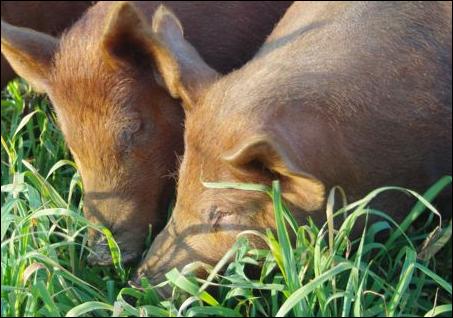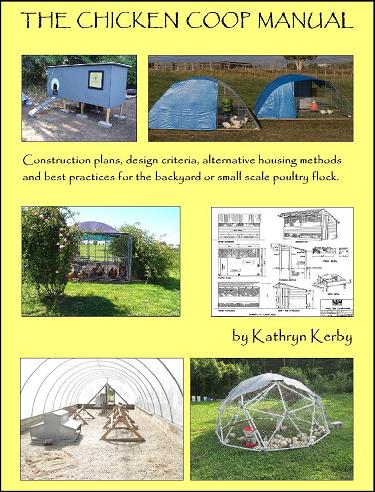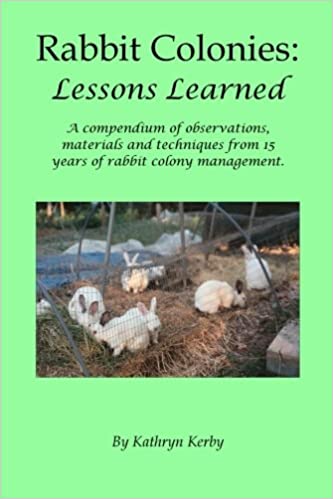|
Search this site for keywords or topics..... | ||

Custom Search
| ||
Small Scale Pig Production

Small scale pig production can be a wonderful way to diversify the small family farm, ranch or homestead. Hogs were traditionally known as "mortgage lifters" because they were so prolific, and provided several products with steady demand. That situation changed a little in the decades after WWII, as confinement hog operations became more commonplace. Large-scale hog production became the norm and few people were interested in small scale methods. Yet pigs are still prolific and relatively easy to manage. Profits are still possible if the herd is carefully managed. And the meat quality from small -scale hogs is world class. We'll take a look at modern hog management - the opportunities, the challenges, and the methods being used by successful pork producers. Even if a family simply wants to raise a few piglets for their own larder, this section of the website will help them do so successfully, and cost effectively.
Meat Production
Many families dream about raising a pig or two every year for their own larder. That has been one traditional form of hog husbandry for hundreds, if not thousands of years. And it can still be done today in most locations, even including some urban locations. However, the modern pig owner will need to consider things like feed costs, odor concerns, local ordinances and other relatively new issues before buying a few piglets and bringing them home.
Similarly, many farms and ranches wonder if they could raise either weaner pigs, or actually breed and raise their own stock, expressly for the purpose of retail pork sales. This has proven to be a very good enterprise for many small farms and ranches. But here again, prospective pork producers will have to be careful with feed costs, local, regional and national regulations, slaughter and butchering know-how, and even marketing and packaging.
It has been done, it can be done, and it is being done, profitably, all over the country. We'll take a look at how.
Weaner Pig Production
Another possible hog enterprise is weaner pig production. In this instance, sows are bred and litters raised specifically to sell the young piglets right after they are weaned - typically anywhere between 4 weeks and 12 weeks of age. This simplifies many aspects of hog production, but it can be very seasonal and driven by issues such as local 4H or FFA show schedules. It also often requires that the sows be bred late in the year and give birth in late autumn or winter, so that they are weaned in time for early spring purchase and for showing in summertime. For folks with harsh winters and/or those who are north of about the 45th parallel (or south of the 45th parallel for folks in the Southern hemisphere), winter heating AND lighting will become an issue which has to be dealt with to ensure breeding success and piglet survival.
Another option for weaner pig sales, are the so-called "luau pigs" or "BBQ pigs". These are typically smaller pigs or piglets, butchered quite a bit earlier than usual, and then roasted according to traditional Polynesian recipes or BBQ'ed according to personal or regional preferences. This option definitely has the making of a niche market, but it is also extremely seasonal.
We'll take a look at the various opportunities and challenges for these weaner pig production models, and how folks are successfully raising pigs for this purpose.
Breeding Stock Production
It is relatively rare for folks to raise hogs primarily or solely for the sale of breeding stock. The demand in many locations isn't high enough to support a business with that as the only product. However, many farms and ranches which already raise hogs for meat and/or weaner pig sales, can very easily roll this option into their existing setup. The method here is to start with purebred stock which ideally have better than average builds and performance, then market them according to breed and/or purpose. We'll take a look at this aspect of hog ownership, some of the pro's and con's of selling registered and/or purebred stock, and provide some guidance on how to make it profitable.
Hog Nutrition
Oddly, hogs should be one of the simplest creatures to feed, because we have very similar digestive systems. Yet any hog mentor will know that more mistakes are made here than in almost any other aspect of hog husbandry. Too much feed, too little, wrong types, poor proteins, insufficient minerals and poor nutritional profiles are all common mistakes. Sadly, these mistakes can result in major health problems, very high-cost animals, reproductive failures, or all three. We'll take a look at what hogs need, and how to give it to them in cost effective ways.
Pig Breeding Options
Hog breeding boils down to three basic options: own a boar, borrow a boar, or use artificial insemination. All three options have their share of pro's and con's. No one method is "the right way" because different circumstances call for different solutions. Even on the same facility, sometimes one solution is more appropriate than another. We'll take a look at these three options and each of their characteristics.
Pig Health
A healthy pig is a joy to behold - lively, growing well, solidly built, active and a pleasure to be around. Conversely, a sick pig is often easy to spot - quiet, depressed, lethargic, off feed, hiding in some protected place, limping or showing other physical symptoms, and/or no longer growing or thriving. A variety of illnesses and parasites can affect pigs of any age. The careful hog owner knows that keeping pigs healthy is a lot easier than curing a sickness already underway. We'll take a look at how to keep pigs healthy, how to diagnose illness, injury and parasitism, and what to do when a pig is not doing well.
Pig Housing Options
Hogs have the unfortunate reputation as being able to live anywhere, in any conditions, without shelter of any kind. While they do not need much in the way of shelter, even basic provisions will go a long way towards keeping them healthy and comfortable. Additionally, a minor investment in housing up front will pay itself back in lower feed costs and greater rates of gain. Housing for pigs is a good investment; we'll take a look at how and why.
Pastured Pigs
Conventional hog farms typically feature confined management, where the pigs are indoors their entire lives. While this can be an extremely efficient operation on paper, many questions have recently begun to emerge about whether these operations have too high a cost in terms of environmental, ethical, and/or regional economic complications. Additionally, many livestock owners, and many consumers, want to raise their hogs in more "natural" conditions than conventional confinement would allow. Click here to learn more about pastured hog production, forest swine management, and alternative housing and farrowing options.
Pig Books
We have compiled a list of the books which have been useful to us over the years. Click here for those books, and enjoy browsing!
Our Successful Farming and Ranching Books

We released our very first self-published book. The Chicken Coop Manual in 2014. It is a full color guide to conventional and alternative poultry housing options, including 8 conventional stud construction plans, 12 alternative housing methods, and almost 20 different design features. This book is available on Amazon.com and as a PDF download. Please visit The Chicken Coop Manual page for more information.

Rabbit Colonies: Lessons Learned
We started with rabbits in 2002, and we've been experimenting with colony management ever since. Fast forward to 2017, when I decided to write another book, this time about colony management. The book is chock-full of practical information, and is available from both Amazon and as a PDF download. Please visit the Rabbit Colonies page for more information.
The Pastured Pig Handbook
We are currently working on our next self-published book: The Pastured Pig Handbook. This particular book addresses a profitable, popular and successful hog management approach which sadly is not yet well documented. Our handbook, will cover all the various issues involved with pastured hog management, including case studies of numerous current pastured pig operations. If you have any questions about this book, please Contact Us.